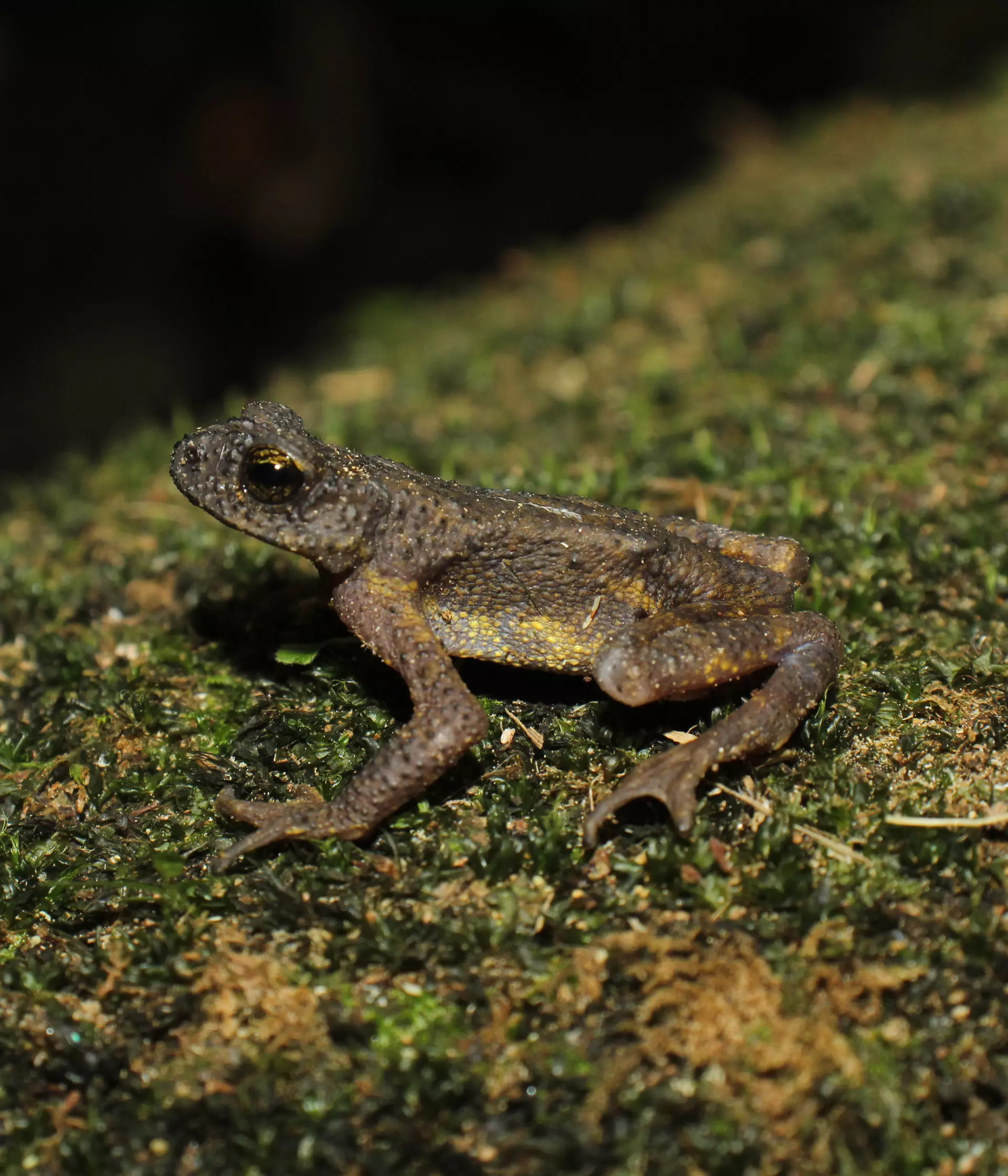Ben Tapley is ZSL’s Curator of Reptile and Amphibians – and while he spends much of his time overseeing the reptiles and amphibians living at London and Whipsnade Zoo, he’s also a scientist and conservationist who works to better understand how we can protect the natural world. Here Ben explains why knowing how many different amphibians – like frogs, toads and newts – we share our planet with is so important for conservation.
I was born in the early 1980s. Incredibly, over 60% of the 8,700 known amphibian species have been described in my lifetime. Many of these are now close to extinction. We don’t know how many amphibian species there are, but there are scientists all over the world, including myself, frantically describing species before they are lost forever.
Some of the new amphibians described this century range in shape and size from frogs that could sit comfortably on my little fingernail to giant salamanders the size of an adult man. Another new discovery is the purple frog - an enchantingly chubby species with a tiny, pig-like snout, it barely resembles a frog.
Why are amphibians important?
Almost everyone is familiar with amphibians, but few people know how important they are. They eat the pests in our fields, keep our waterways healthy and help stop diseases from spreading. Amphibian skin secretions a whole range of different chemicals that could help advances in human medicine.
Unfortunately, amphibians are the most threatened group of vertebrates on the planet. 41% of them are threatened with extinction according to the International Union for the Conservation of Nature’s (IUCN) Red List. Some amphibian species have not been seen since they were first described - in some cases, over 100 years ago. There have even been instances of amphibians being named after they have gone extinct.
Working with our EDGE of Existence programme, my ZSL colleagues and I have published research that shows that the countries with the greatest rate of amphibian species descriptions are often those with the highest rates of deforestation. Habitat loss is the single greatest threat to amphibians.
A new species of toad
In 2020, I took part in an IUCN workshop to work out which amphibians are most at risk in south Asia. One amphibian left an particular mark on me. The Meghalaya rock toad - a little-known toad from northeast India - was assessed as Endangered in 2004, when it was thought to occur across the states of Meghalaya and Mizoram. At the workshop almost 20 years later, after looking at the evidence available we worked out that the Mizoram population of this species is an entirely different, undescribed species.
This is important for two reasons. Firstly, since there are fewer Meghalaya rock toads than previously thought, we had to assess it as Critically Endangered.
Secondly, I could not get the population of tiny toads from Mizoram out of my mind. They were unnamed, almost certainly threatened with extinction, and they had been left in conservation limbo.
Fortunately, I was not the only person ruminating over the fate of this toad. A paper led by EDGE of Existence fellow R.S. Naveen was recently published where we describe this species - the Mizoram rock toad. This is a huge win for the toad; now it has a name, we can finally work to conserve it. And yes, from the limited information we have, this species meets the criteria for being assessed as Critically Endangered.
Why is identifying different species so important?
One of the biggest challenges we face in conservation is that there isn’t enough money or people to protect all the plants and animals out there . This is especially true for amphibians. We are in a sad predicament where we must choose which species we have to help protect first.
Whilst every species is of course important, we need to know which species extinctions might be the most harmful. For example, we might prioritise species based on the amount of unique evolutionary history they have those that may have an especially important role in the environment or those with a particular cultural significance.
The Mizoram rock toad is not the only species that colleagues and I have described as new to science. Over the course of five years, we described five horned frog species within a 30km radius in the rugged mountains of Vietnam - laborious work to evaluate differences between how they look and how their calls sound relative to other horned frogs, followed up by DNA analysis to concretely show that these are different species. Three of these horned frogs have since been assessed as Endangered by the IUCN, all having been found in increasingly degraded forests. The sad truth is that many newly described species are identified as being threatened with extinction pretty soon after they are first described, as they often have small ranges which leaves them inherently vulnerable to habitat loss and chance events such as disease.
Describing a new species is painstaking work yet it underpins our efforts to conserve global biodiversity. Biodiversity loss is one of the biggest challenges we face today, but at this rate, we cannot hope to know and conserve all the unnamed species before they are lost forever. Their future relies on us urgently protecting their habitats, and addressing threats such as deforestation, giving us more time to understand and take action to save the hundreds, if not thousands, of yet unnamed species that are on the brink of extinction.
